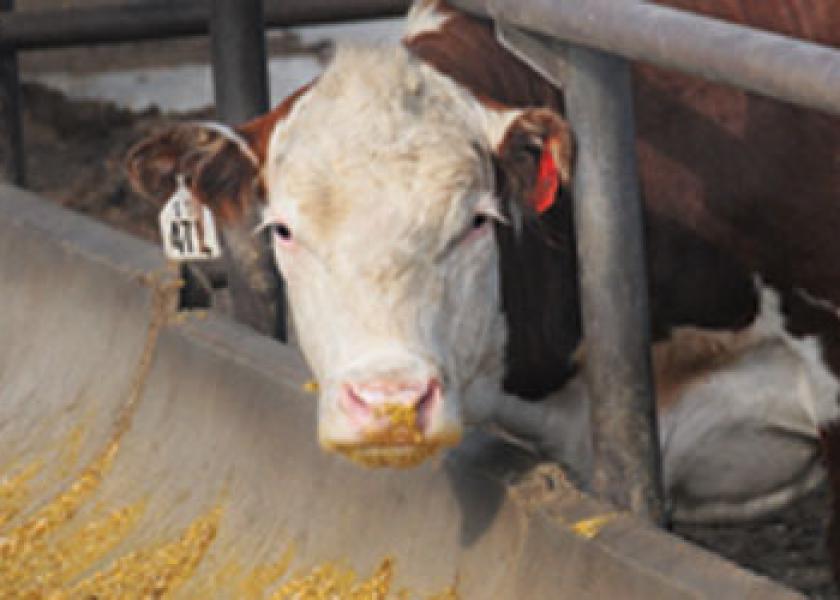Deciding to Put Cows on Feed

Sometimes, desperate times call for desperate measures. Last summer, many Southern Plains cow–calf producers were pretty desperate. With one of the worst droughts in history, forage resources, both grazing and hay, were almost nonexistent.
Producers resorted to shipping in hay from states as far away as Montana and the Dakotas. Others were shipping cowherds north to graze. And still others decided to place some of their breeding herd into open feedyards.
Frontera Feedyard in Muleshoe, Texas, found itself feeding some of those cows for ranchers. In October, it had several pens full of mama cows and bred heifers, and others full of early-weaned calves.
And there are other feedyards opening their doors to brood cows. Paul Colman, Frontera Feedyard managing partner, shares some of the math his cow customers are looking at. He says they can maintain cows on a high-roughage ration with 16% corn for around $2 a day. For cows needing some nutritional upgrade, he says, a 45% to 50% corn ration calculated to raise body score one point in six weeks was $2.50 to $2.70 per cow per day back in October.
In normal times, that would seem high. Most producers in that the Texas Panhandle spend $15 to $20 a month to keep a cow on grass. But drought conditions made this past year anything but normal. Unfortunately, the weather outlook is pointing to continued drought in the Southern Plains and the possibility that it might spread further north this summer.
Last summer, at the height of the drought sell-off, ranchers had a choice between selling a cow and planning to replace her next spring. Colman figures that, given the 2011 value of cows versus the presumed 2012 value, ranchers might need to spend $500 to $750 more to replace cows than they’d get for selling cows now.
That may not be too far off, considering that producers are already seeing prices for quality replacement go up, especially for guaranteed bred females. Since the replacement and seedstock market follows the cattle market, consider that analysts are predicting higher fed cattle prices.
Allendale’s Rich Nelson predicts fed cattle prices could reach $1.36 per cwt. next spring. If so, there is no telling what a fertile cow could be worth. Have a plan in place. As a short term solution, putting cows in the feedyard might work, but longterm it may not make economic sense. The key factor in the decision is cost and resources.
Ted McCollum, Texas AgriLife Extension beef specialist in Amarillo, says that producers need to determine the total daily cost of placing cows into a feedyard. "Ask for turnkey cost, including yardage, labor and feed. Then look at the time period and see if that total cost can be handled."
Also, if pasture conditions don’t improve in the time anticipated, you will need to plan on whether or not to sell the cow or continue to feed. If placing cows in a feedyard makes sense for you, there are some key questions you need to ask potential feedyards. Besides the total cost, McCollum says, ask if roughage prices are locked in for the time period cows will be fed.
If that roughage is not contracted out, the cost of the ration might change, especially if roughage supplies tighten. If drought continues into the spring and summer, as some predict, even the feedyards will be strapped to find reasonably priced feed sources.
Other questions to ask:
- If cows have just calved, is the feedyard comfortable with managing pairs? Would it be better to wean calves early and manage cows and calves separately?
- Is the feedyard comfortable with calving cows? Ask about the staff’s experience with calving and if the feedyard is prepared for that task.
- Ask about health programs before sending animals to the feedyard and while the animals are there.
If the option pencils out, it might be worth it to hold onto cows rather than replacing animals when pastures improve. By that time, female replacement prices could be significantly higher.







